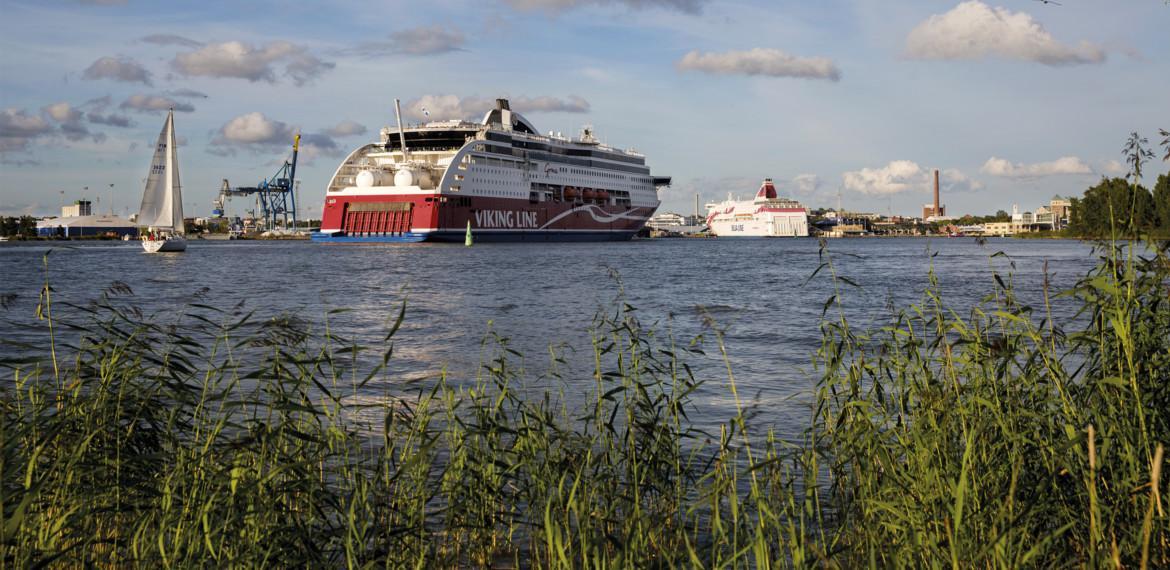Environmentally responsible port operations

The Port of Turku is one of the pioneers in its field regarding measures aimed at reducing environmental impacts. Co-operation with the different port operators and other stakeholders have over the years resulted in a number of concrete improvements which are visible, for example, as smaller emissions, more efficient processing of waste water and other waste, and decrease in the environmental impacts of port traffic. Furthermore, the energy consumption of the Port’s own operations has been cut down considerably by using new technology e.g. in the lighting of the port area and warehouse shelters. Environmental sustainability is an important competitive advantage both domestically and internationally also in choosing the logistics routes.
One of the key environmental issues is the processing of dredging masses generated in the maintenance dredging of the Port’s vessel fairways. According to the decision made in 2019, the Port of Turku and the City of Turku stopped the disposal of dredging masses in the sea and are transferring to disposal on land. The first disposals on land will be made possible by the City in the Latokari district where the dredging masses will be used in the pre-construction of a new residential area. The planning of a new disposal pool is also starting in the Pansio harbour where the embankment pool built in 2009 acted as a pilot site for the disposal of masses eligible for disposal in the sea.
Long-term work for the environment has yielded results

To improve the condition of the Baltic Sea, the Port of Turku is continuously developing the collection of waste water from vessels. At present, there are fixed waste water collection points both in the passenger harbour and the quays used by cruise liners and cargo transports, allowing a quick and inexpensive way for the vessels to empty their waste water directly into the city’s waste water system.
As part of its environmental work, the Port of Turku was among the first ports to introduce environmental discounts on vessel charges that also encourage the shipping companies to take the environment into account. From the beginning of 2021 on, the bases for discounts were revised to comply with the Clean Shipping Index. The index takes into account the nitrogen, sulphur and carbon dioxide emissions of vessels as well as chemicals, water, waste and particle emissions. In 2022, the Port’s nitrogen and sulphur emissions will be further reduced by the change in Viking Line’s fleet, with the new LNG-fuelled m/s Viking Glory replacing m/s Amorella on the Turku–Stockholm route. Emissions are also reduced by the automatic mooring and unmooring system that was introduced on Viking Line’s quay in late 2021.
Read Environmental Report 2021 (pdf).
Text: Kari Ahonen
Photo: Jarmo Piironen
